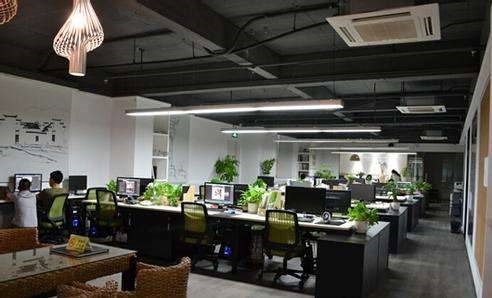Directory
01 Site Classification and Characteristics
Preparation before work in the workplace
03 Hygiene Requirements in Places
04 Site Epidemic Response
01
Classification and Characteristics of Places
Definition of public places:
(1) Hotels, restaurants, inns, guest houses, chariots and horses shops, cafes, bars and teahouses;
(2) Public bathrooms, barbershops and beauty shops;
(3) theaters, video halls (rooms), amusement halls (rooms), dance halls and concert halls;
(4) stadiums (gymnasiums), swimming pools (gymnasiums) and parks;
(5) Exhibition halls, museums, art galleries and libraries;
(6) Shopping malls (shops) and bookstores;
(7) Waiting rooms, waiting rooms (planes and ships) and public transport.
02
What preparations should be made before work
Guarantee and protection materials:
Prepare prevention and control materials such as masks, disinfectants, hand sanitizers, quick-drying hand disinfectants, thermometers, etc.
Strengthen personnel training
Arrange special personnel to carry out training on disinfection operation procedures and epidemic prevention and control measures.
To improve the epidemic prevention and control and emergency response capabilities
Wear mask logo reminder:
Remind personnel at the entrance of offices and public places and wear masks when necessary.
Post health tips prominently
Use various display screens to publicize the prevention and control knowledge of novel coronavirus pneumonia and other infectious diseases.
Management of discarded masks:
Special garbage can for discarded masks can be added
Put used masks into special garbage cans.
Pay attention to timely cleaning
Preventive disinfection:
Daily ventilation and cleaning are the main methods.
At the same time, preventive disinfection shall be carried out on public goods and parts that come into contact with more.
When necessary, preventive disinfection shall be carried out on the ground, walls, etc.
Employee health monitoring:
Implement a daily health monitoring system and establish a body temperature monitoring registration book.
Registration of staff returning from the field is required
According to the principle of territorial management
Every day before going to work, the employee should take a body temperature measurement.
Health education:
Publicity brochures will be issued to those who return to work.
Put up health protection posters in offices and places with heavy traffic in public places.
Play promotional videos and push protection knowledge materials through WeChat public numbers and microblogs
03
Hygienic requirements in the premises
Ventilation:
1. Give priority to opening windows and adopt natural ventilation. If conditions permit, air extraction devices such as exhaust fans can be turned on to enhance indoor air flow.
2. When using the centralized air conditioning and ventilation system, the normal operation of the centralized air conditioning and ventilation system shall be ensured. Return air should be closed and fresh air should be used for operation to ensure sufficient fresh air volume in the room.
3. The exhaust fan of the van elevator and the ventilation system of the underground garage shall be guaranteed to operate normally.
Air conditioning operation:
1. Adopt a new air mode to operate and turn off the humidification function of the air conditioner to ensure that fresh air is directly taken from the outside, the air inlet is clean, and the air outlet is unobstructed.
2. Disinfect the air inlet and air outlet of the air conditioner regularly and wipe them with disinfectant with available chlorine 500 mg/L
3. Strengthen the cleaning and disinfection of condensate pan and cooling water of fan coil unit
4. Cleaning and disinfection of air conditioning and ventilation systems shall be carried out in accordance with the Cleaning and Disinfection Specification for Centralized Air Conditioning and
Garbage collection and disposal:
1, Classified collection, timely removal. Ordinary garbage is put into black plastic bags, masks and other protective articles. Garbage is classified and treated according to domestic garbage. There is no scattering around the garbage can and garbage point, all kinds of garbage in the garbage storage point shall be cleaned up and transported in time, and the garbage shall not be piled up in excess of time.
2. Cleaning and disinfection. Garbage transfer vehicles and garbage cans shall be kept clean and can be regularly sprayed or wiped with chlorine-containing disinfectant with available chlorine 500mg/L for disinfection. The walls and floors of garbage sites shall be kept clean and can be sprayed regularly with chlorine-containing disinfectant containing available chlorine 500mg/L
Escalators, van elevators:
1. It is suggested to avoid taking van elevators as much as possible and wear masks when taking them.
2. The floor and side walls of the van elevator shall be kept clean and disinfected twice a day.
3, elevator buttons, escalator handrails and other frequently contacted parts of the daily disinfection should not be less than 3 times
Underground garage:
1. The ground of the underground garage shall be kept clean.
2, parking card keys and other personnel often contact parts of disinfection should be not less than 3 times a day
Meeting rooms, offices, multi-function halls:
1. Keep the environment in the office area clean. It is recommended to ventilate 3 times a day for 20 ~-30 minutes each time. Pay attention to keeping warm during ventilation.
2. Staff should wear masks and keep a distance of more than 1 meter when talking.
3. Reduce the frequency and duration of meetings. When the temperature is appropriate during the meeting, windows or doors shall be opened. It is suggested to adopt network video conference and other methods.
Restaurant Catering Places (Areas), Canteens and Tea Rooms:
1. Maintain air circulation, with cleaning as the main factor and preventive disinfection as the auxiliary factor.
2. Take effective diversion measures to encourage packing and take-out, and avoid crowded personnel and dinner activities.
3. Disinfect the restaurant once a day
Toilet:
1. Strengthen air circulation. Ensure the water seal isolation effect of wash basin, floor drain, etc.
2. Sanitary cleaning shall be carried out at any time every day to keep the ground and walls clean, and the hand wash basin shall be free of dirt and the urinal shall be free of excrement and dirt accumulation.
3. Use chlorine-containing disinfectant with available chlorine 500 mg/L to wipe the surfaces of public countertops, hand basins, door handles, sanitary ware and other objects, and wipe them clean with clear water after 30 minutes.
04
Site epidemic response
Set up emergency areas:
1. Emergency areas may be set up in offices or public places.
2. When personnel with suspected symptoms appear, they should go to the area for temporary isolation in time and then deal with them according to relevant regulations.
Strengthen health monitoring:
1. Employees should pay attention to their own health status monitoring during their on-the-job period
2. Do a good job of self-management according to the principles of “early detection, early reporting, early isolation and early treatment”
3. Business units shall reasonably arrange rest breaks.
Response to Suspected Cases:
1. When employees have suspicious symptoms such as fever, fatigue and dry cough, they should arrange to seek medical treatment nearby in time.
2. Under the guidance of professionals, disinfect their work places and articles used.
3. Business premises shall report to relevant departments in a timely manner.
4. Close contacts are screened and segregated under the guidance of professionals.
Fight against the epidemic, start with me!
Source: Jiangsu Center for Disease Control and Prevention

